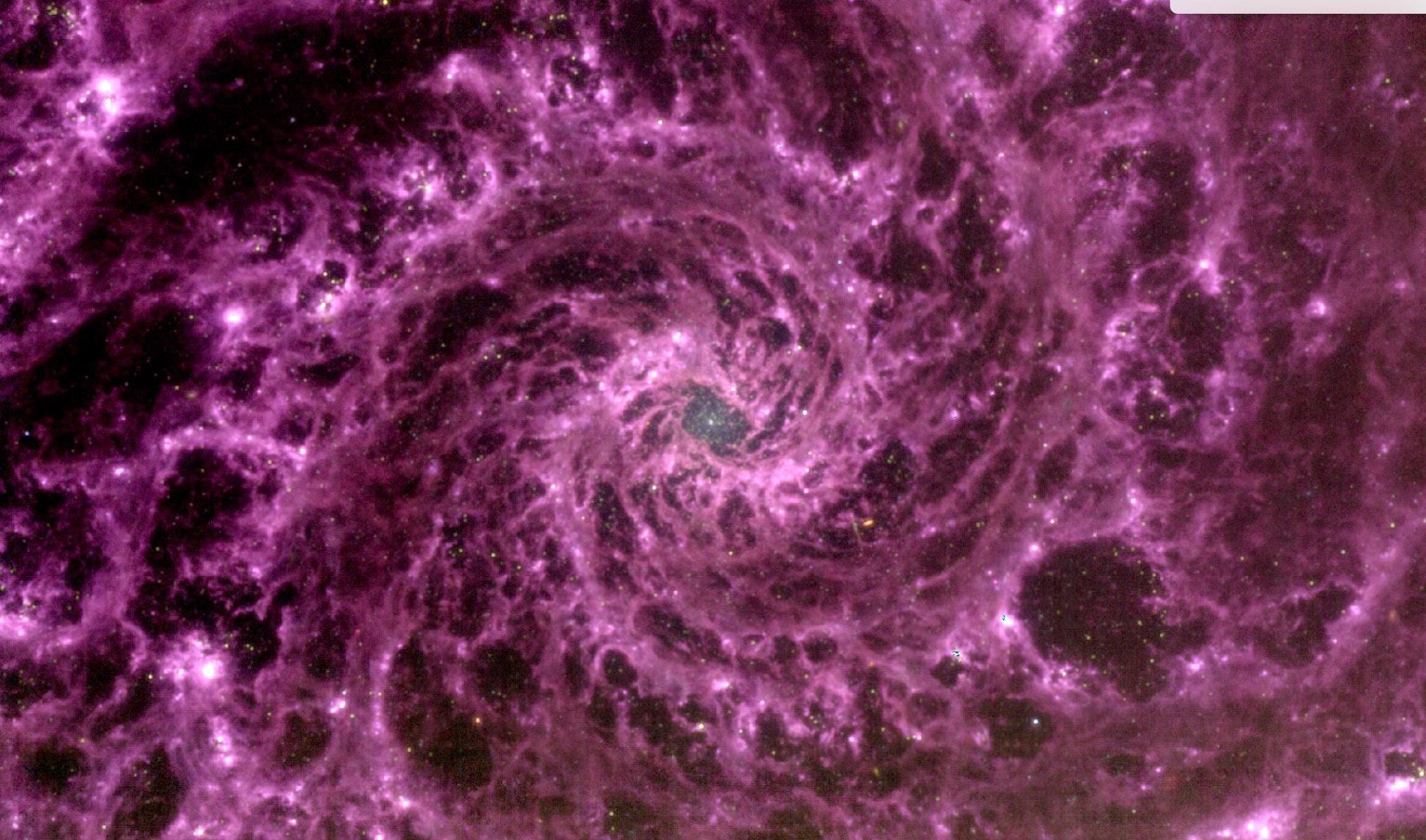
An astronomer sandwiched data from the James Webb Space Telescope (JWST) into a breathtaking image.
The galaxy Messier 74 (M74) shines about 32 million light years away in the constellation Pisces. It’s a fantastic target for any space enthusiast: The galaxy appears face-on from Earth, so its broad spiral arms are easy to admire thanks to its orientation in space.
A new view of M74 comes by way of Gabriel Brammer, associate professor at the Cosmic Dawn Center in the Niels Bohr Institute at the University of Denmark. As Brammer explains on Twitter, he downloaded processed raw data already collected by JWST’s Mid-Infrared Instrument (MIRI) and then compiled the views from three out of MIRI’s nine filters to produce a new view of the galaxy. The unprecedented clarity of the image shows off JWST’s capabilities, and not surprisingly, the picture excited many of Brammer’s fellow astronomers on Monday.

“Let's just see what JWST observed yesterday… Oh, good god,” Brammer tweeted on Monday, when he published what looks like a whirlpool of purple that radiates counter-clockwise from the galactic center.
“We are drinking from a firehose,” Gemini Observatory chief scientist Janice Lee remarked about the spectacular view on Twitter. Lee, who is also the executive chair of NASA’s Cosmic Origins program, helmed the work that produced the raw data that became this image of M74.
Lee’s team gathered the building blocks of this gorgeous view as part of the PHANGS survey. Short for “Physics at High Angular resolution in Nearby GalaxieS,” PHANGS focuses on spiral galaxies because the amount of information they contain about stellar formation is “overwhelming.”
“JWST touches on so many different phases of the stellar life cycle — all in tremendous resolution,” Janice Lee states in a NASA description about PHANGS.
Allison Kirkpatrick, an astronomy professor at the University of Kansas, tweeted Brammer’s image along with another picture from the now-retired infrared Spitzer Space Telescope. The side-by-side images in a Monday tweet showcase the myriad of cosmic details that JWST will highlight as it continues studying the Universe.
Brammer answered a few questions from Twitter, where professional astronomers and amateur space enthusiasts sought to better understand what they were seeing.
“For a tiny bit more context, the purple color cast here is actually ‘real’ in the sense that emission from interstellar cigarette smoke (PAH molecules) makes the filters used for the blue and red channels brighter relative to the green,” Brammer wrote in a tweet.
The raw data was available for download from the Barbara A. Mikulski Archive for Space Telescopes (MAST) portal. “Much of the science data can be freely downloaded immediately by anyone,” Brammer wrote in another tweet, “though some data have [an] exclusive access period of 6mo-1yr for the team that designed the observations.”







